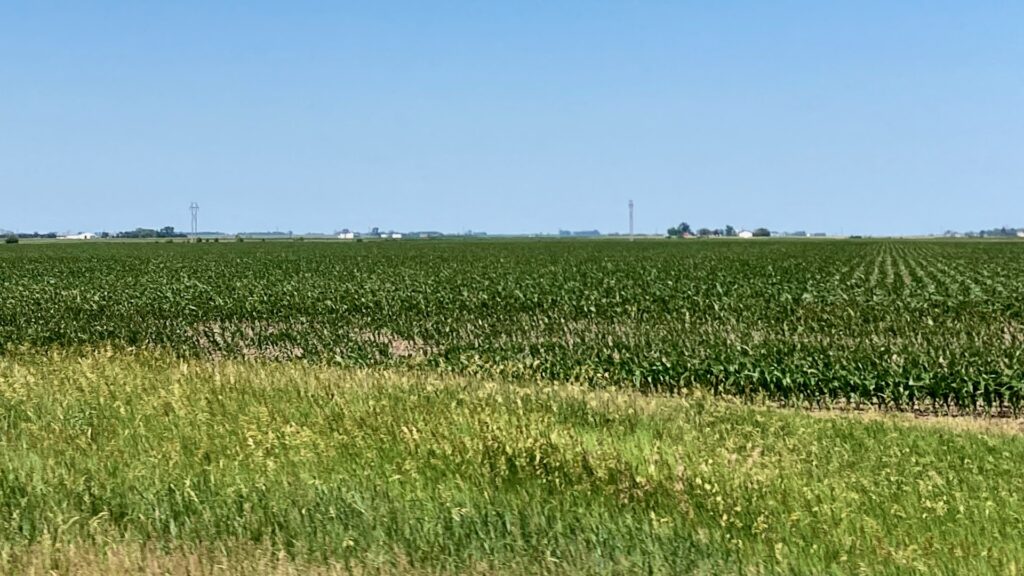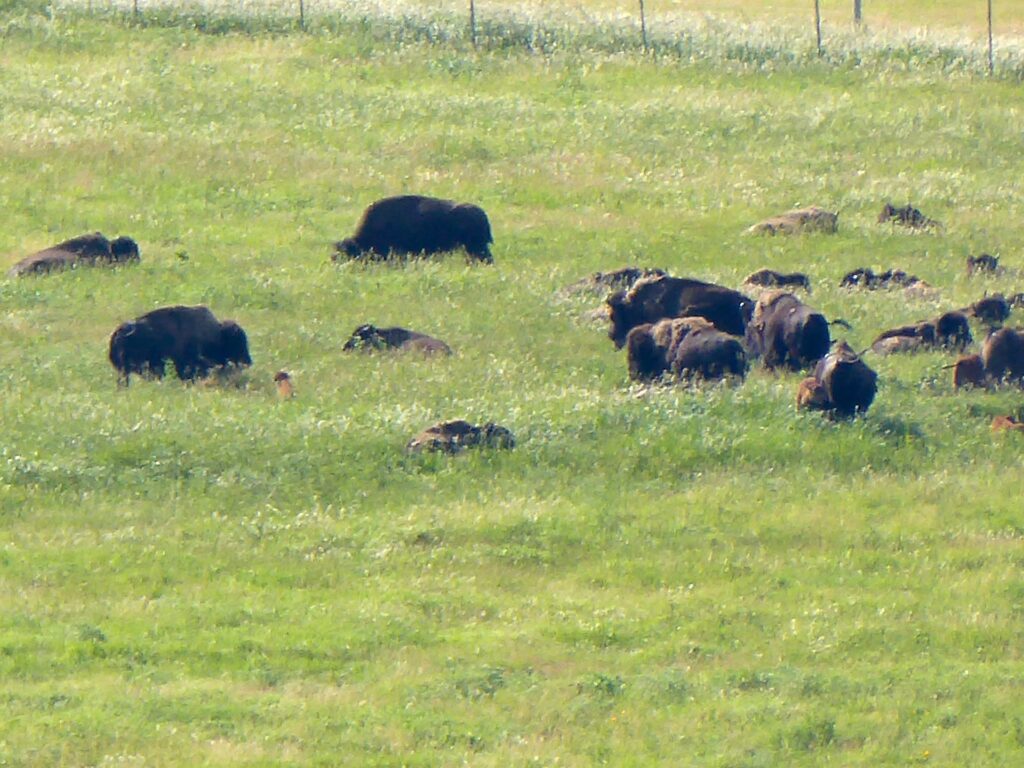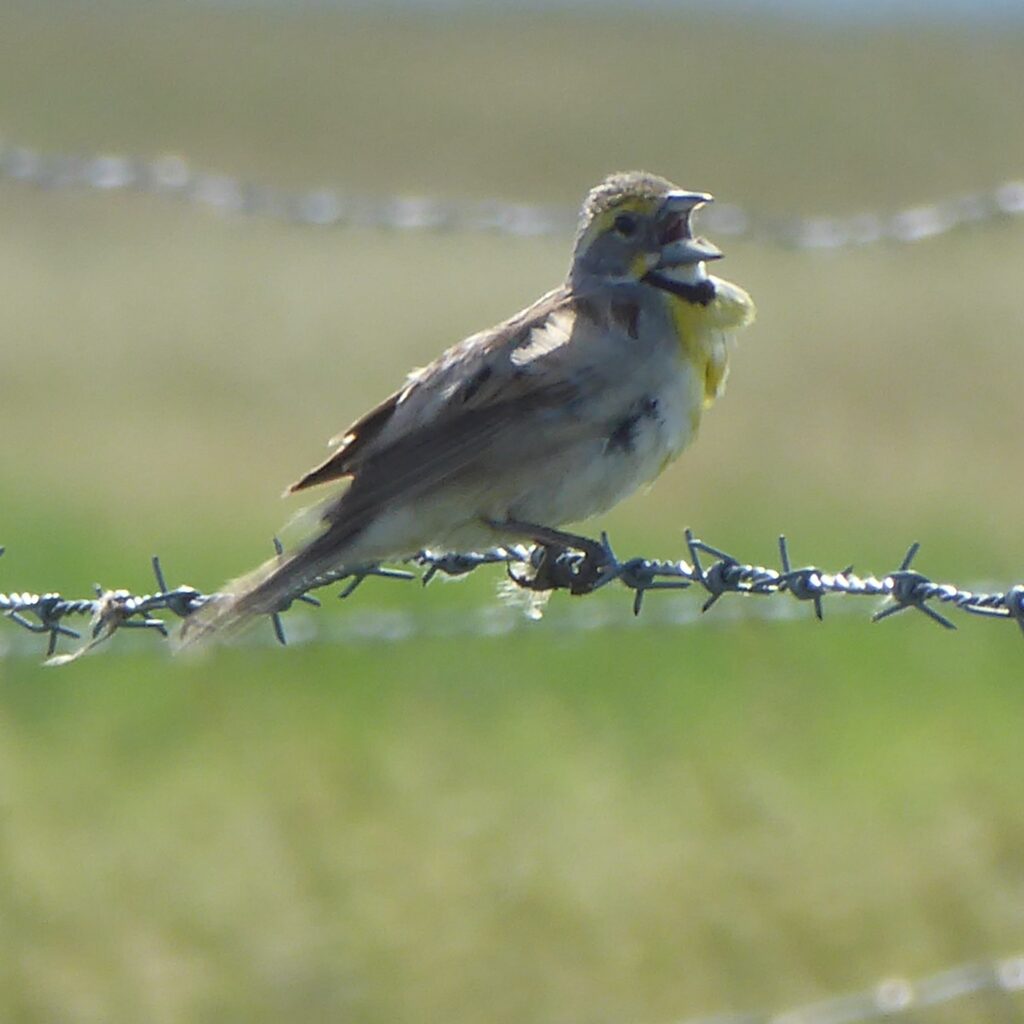We left Chamberlain at about 9:30, and headed to Yankton, South Dakota, to see Carol’s Aunt Rose. Our route took us off the interstate highway and onto a two-lane state highway. We passed through one or two small towns (with populations of a few hundred people), but mostly we drove through an agricultural landscape. We still saw cattle being grazed, but we also began to see vast fields of soybeans.

This is not an idyllic pastoral landscape, as it may first appear, but rather an industrial landscape. Monocultural agriculture requires large inputs of chemicals: fertilizers, herbicides, and pesticides. Self-sufficient family farms raising a variety of crops have mostly disappeared — as evidenced by the many abandoned barns and farm houses in the landscape — replaced by impersonal agribusiness devoted to commodity crops like soybeans. This is the culmination of a trend noticed by Henry Thoreau back in the 1840s. Thoreau noted that the emergence of agriculture and farming in his day replaced the old values of “husbandry”; the former devoted to extracting the maximum dollar value of crops from the land, the latter devoted to stewardship of the land. Implied in this distinction is a vast difference in ethics: the ethics of agriculture and farming prioritize the maximizing of immediate profit for the individual landowner; the ethics of husbandry has a much broader understanding of the value of the land.
We arrived in Yankton in time for brunch. Aunt Rose cooked a lovely brunch for us. While we ate, Carol and her aunt talked about family. It was the highlight of our day. As we left, we apologized for taking Aunt Rose away from church, but she said she didn’t mind because everyone was busy planning her church’s vacation Bible school that starts tomorrow.
Soon after leaving Yankton, we crossed the border into Minnesota. We stopped at Blue Mounds State Park in Luverne, Minn., for a hike. The park includes an escarpment of red Sioux quartzite that’s as tall as a hundred feet in places, as well as over a thousand acres of tallgrass prairie. A small herd of bison lives in a fenced-in area of several hundred acres of prairie. We did see the bison, but they were so far away that they appeared as little more than dark splotches.

A thousand acres of prairie sounds like a lot. But seeing the little herd of bison stuck in that patch of prairie gives another perspective.Two hundreds years ago there would have been millions of bison roaming over millions of acres. From that perspective, the park seems small. Only about 1-4% of the original tallgrass prairie still survives in North America; the rest of the land has been turned to agriculture.
But I enjoyed myself in Blue Mounds State Park. Pricklypear cactus (Opuntia sp.) were in bloom, as were native roses (Rosa sp.) and sumac (Rhus sp.). Western Meadowlarks sang throughout the grasslands; this could be the last time I see and hear Western Meadowlarks on this trip, for soon we’ll be in the range of Eastern Meadowlarks. In fact, we’re already seeing the transition to eastern North American species: Stellar’s Jays have been replaced by Blue Jays; Poison Oak (Toxicodendron diversilobum) has been replaced by Poison Ivy (Toxicodendron radicans rydbergii — turns out this was Western Poison Ivy, which does grow in the east, and in fact interbreeds with Eastern Poison Ivy, T. radicans).
We spent a couple of hours walking through the park. Maybe that was too long, because it was after ten when we arrived at our motel in Albert Lea, Minn. But we both felt we needed a long walk after all the hours we’ve spent driving in the past week.

My iNaturalist observations for June 26
